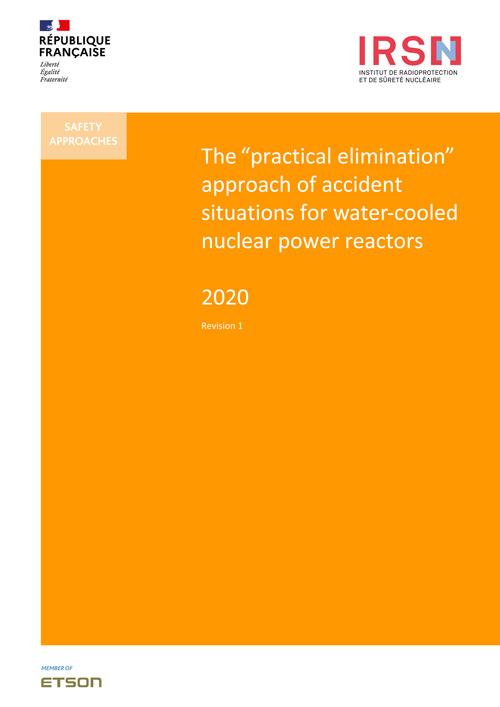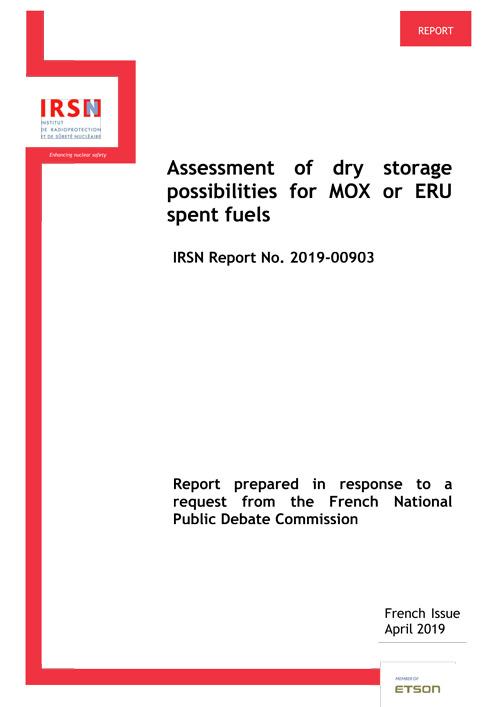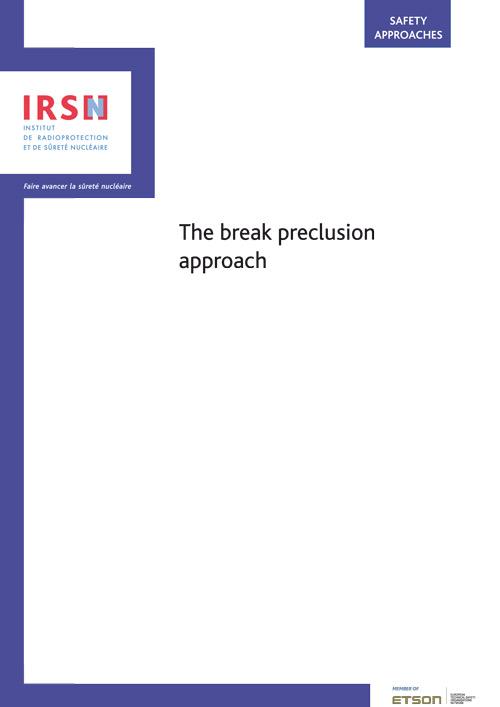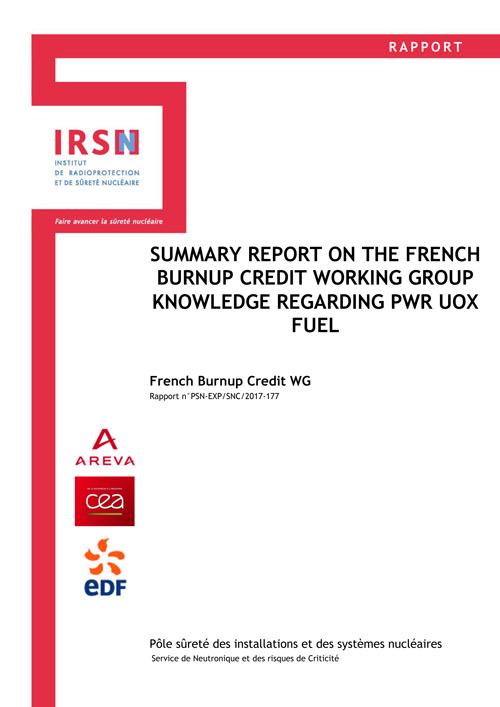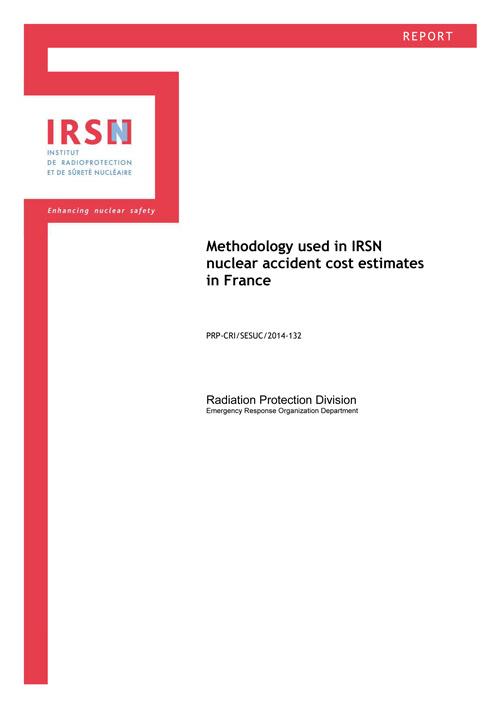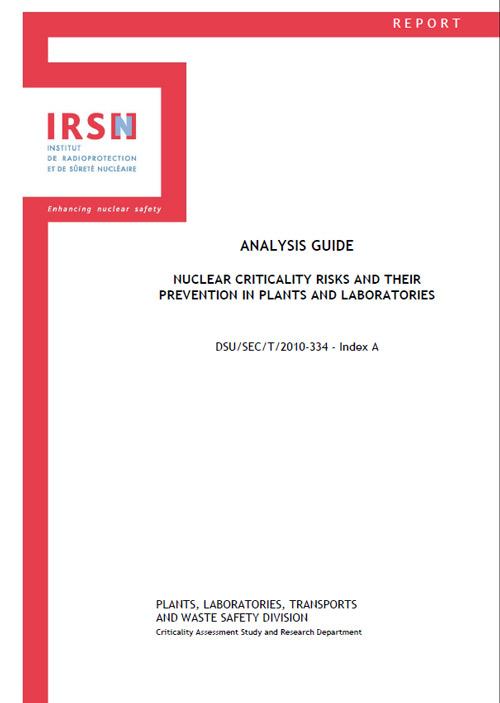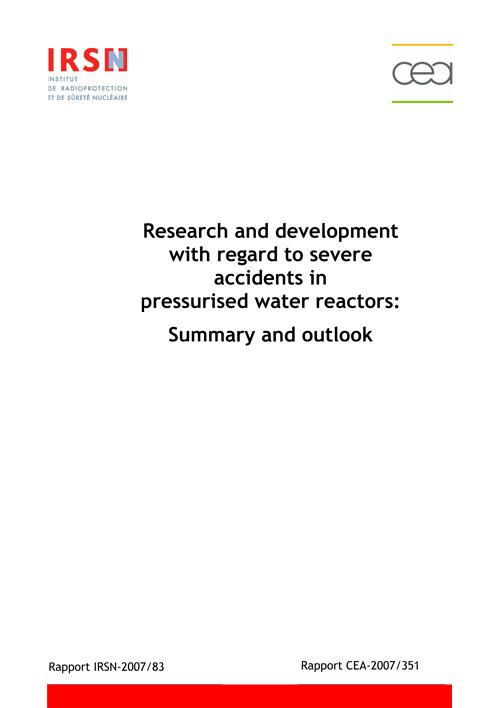Publications and reports: Nuclear Safety
This page contains IRSN publications and reports on nuclear safety.
2021
Date of first publication: January 2018
Update in March 2021
The implementation of the defence in depth principle leads applicants to define provisions to prevent accidents, including severe accidents, and to limit their consequences should they occur. Some severe accident situations potentially lead to large early radiological releases, for which it appears impossible to define realistic and demonstrable provisions to limit their consequences according to current knowledge and the techniques available: applicants shall then use the “practical elimination” approach.
IRSN publishes an orientation document which defines “practical elimination” approach and its place in safety demonstration for nuclear power plants involving pressurized water reactors.
2020
-
As part of preparation for the public debate on the 2019-2021 French National Plan for the Management of Radioactive Materials and Waste (2019-2021 PNGMDR), the President of the National Public Debate Commission asked the French Institute for Radiological Protection and Nuclear Safety (IRSN) to carry out an assessment of the dry storage of spent nuclear fuels containing mixed uranium and plutonium oxide (MOX) or enriched reprocessed uranium oxide (ERU).
This report complements the IRSN n°2019-00181 report on concepts and safety issues related to the storage of spent nuclear fuel published in March 2019 (French issue in June 2018) in response to a request from the Parliamentary Committee of Inquiry into the Safety and Security of Nuclear Facilities in France.
IRSN examined, on the one hand the potential compatibility with dry storage of some of the MOX or ERU spent fuels currently stored underwater, and, on the other hand, the potential changes to transport and dry storage concepts in order to raise the reference residual heat values at present accepted, namely below 6 kW for transport and below 2 kW for dry storage.
In conclusion, IRSN’s assessment did not reveal any factors that would rule out storing in dry conditions some of the MOX and ERU fuels currently stored underwater. Nevertheless, the various possible options should be examined, incorporating the related safety and radiation protection requirements as well as all industrial constraints.
The French version of this report was published in April 2019, and the English version in January 2020.
Download IRSN Report 2019-00903 - Assessment of dry storage possibilities for MOX or ERU spent fuels
-
The break preclusion approach is based on the principle of not considering a break in a vessel or piping as a single initiating event to be studied in the safety demonstration. Its application should be duly justified and associated to specific reference documents. Break preclusion approach relies on reinforced requirements intended notably to ensure high quality levels.
IRSN publishes a report related to its recommendations with regards to implementation of break preclusion approach for a pressurized water reactor (PWR). This report completes ASN guide n°22 produced jointly with IRSN and related to design of PWR and specifies some of its elements.
On this basis of insights of the fleet of nuclear power plants, including EPR reactor of Flamanville, IRSN has established a list of conditions needed, in order to allow a break preclusion approach to be acceptable for mechanical equipment. Among these conditions, the applicant shall justify the expected safety benefits of break preclusion implementation from the early project phases.
2019
-
In preparation for the public debate on the National Plan for the Management of Radioactive Materials and Waste 2019-2021 (PNGMDR 2019-2021), the President of the National Public Debate Commission (CNDP) requested the Institute for Radiation Protection and Nuclear Safety (IRSN) to complete the project owner's file with an international inventory of research on alternatives to the geological disposal of high-level waste (HA) and long-lived intermediate level waste. (ILW).
IRSN's bibliographic research in response to this request was based on the use of freely available information published by international agencies (IAEA, OECD / NEA in particular) or national agencies as well as publications on the topic in scientific journals. The resulting panorama identifies the main alternatives to geological disposal explored, historically or currently, around the world to ensure long-term management of high-level waste and long-lived intermediate-level waste (HLW and ILW-LL). It provides historical and scientific evidence to appreciate the context in which different options emerged and were explored. It also identifies the questions of a technical and societal nature to which these options are associated, however without revealing IRSN's position on the topic as to their relevance or technical feasibility.
-
In March 2018, the Chair of the Parliamentary Inquiry Committee on the Safety and Security of Nuclear Facilities, set up by the French National Assembly, requested the analysis of IRSN on the nuclear safety issues associated with a strategy for managing irradiated nuclear fuel (also known as spent fuel) based on the storage of that fuel only in a pool (or underwater so called wet storage) or also in dry storage facilities.
Based on its expertise of fuel storage in France, as well as on the knowledge acquired in the framework of services that the Institute carried out abroad, IRSN has made a review of the existing concepts of spent fuel storage worldwide and in France. The Institute also made a review of the associated safety issues, taking into account the characteristics of different types of fuel and the various types of storage (wet or dry, on-site or centralized).
The French version of this report was published in June 2018, and the English version in March 2019.
Download IRSN Report 2019-00181 - Storage of nuclear spent fuel: concepts and safety issues
2018
-
The "Burnup Credit" Working Group was established in 1997 to examine the various parameters, such as the irradiation conditions, the burnup profile and the nuclides (actinides and fission products), to be taken into consideration in the criticality studies that take credit from burnup.
This report offers an overview of the work that has been completed or agreed under this framework. It presents the group findings on the following topics:
- the axial distribution of nuclides or the axial burnup profile;
- methods for validating the actual burnup and its axial distribution;
- the calculation of nuclide concentrations after irradiation;
- the calculation methods that will be used to determine the effective multiplication factor for systems containing used fuel assemblies.
This document gathers together the work carried out by the French Burnup Credit Working Group; it is not a guide validating a particular method for taking burnup credit into account. All of the findings presented here may serve as a basis in industry for defining a method to take account of burnup credit in criticality studies; any industrial body effectively adopting such a method will also be responsible for defining it, based on its knowledge of the used fuel assemblies and the configuration to be addressed.
This document forms a collection of the work completed by the Working Group up to 1 January 2007 but does not necessarily reflect ongoing work in the various institutes.
-
The implementation of digital systems in the instrumentation and control of nuclear facilities offers increasing capabilities enabling to carry out advanced functions or to provide operators with improved interfaces. However, it raises questions about their “complexity” and introduces sources of failure other than random hardware failures, which the implementation of appropriate design principles makes possible to take into account.
IRSN publishes a document presenting the main challenges associated with the design of the digital instrumentation and control, as well as the general principles to follow to demonstrate that a satisfactory safety level has been achieved.
2017
IRSN presents the results of a study carried out by its research laboratory in human and social sciences aimed at defining guidelines for the use of the "culture" and "safety culture" dimensions in safety assessments of nuclear facilities. The different contributions and limitations of the safety culture concept are discussed, and an analysis grid of cultural aspects of risk organisations is provided.
The concept of Safety Culture is a key element of many initiatives aimed at improving the safety of nuclear facilities. In particular, the IAEA has focused its development strategy on taking into account human and organisational factors. In this context, the IRSN has mainly devoted its evaluations and research to theoretical lines arising from ergonomics and the sociology of organisations. Although this orientation has helped to formulate documented assessments, it is necessary to better take into account cultural aspects, because some of these contribute to risk management. They can, for example, be an important part of provisions to promote cooperation between different professions (maintenance and operation, operation and decommissioning, operation and research, etc.), between project organisation and daily organisation (outage management, change implementation, dismantling worksites, etc.), between companies (relations between customers and service providers).
IRSN thus conducted a study aimed at defining guidelines for the use of the "culture" and "safety culture" concepts in safety assessments of nuclear facilities. First, the contributions and limitations of the safety culture concept are identified, leading as a second stage to a review of the main works on culture that have been conducted in anthropology, sociology, management science and ergonomics. These studies show that taking into account cultural aspects can give access to phenomena that are difficult to deal with using other organisation analytical frameworks. On this basis, four analysis plans were defined, which provide a breakdown of the overall "culture" topic: organisational cultures, professional cultures, social cultures and relations, and national cultures. In the fourth part of the document, these analysis plans are used to revisit safety assessments performed in the past. In doing so, the relationship between cultural aspects and safety are specified and the interest in taking them into account is confirmed.
2015
-
This report - produced in 2013 in its French version and 2014 in its English version - describes the methodology used by IRSN to estimate the cost of potential nuclear accidents in France.
It concerns possible accidents involving pressurized water reactors leading to radioactive releases in the environment. These accidents have been grouped in two accident families called: severe accidents and major accidents. Two model scenarios have been selected to represent each of these families.
The report discusses the general methodology of nuclear accident cost estimation. The crucial point is that all cost should be considered: if not, the cost is underestimated which can lead to negative consequences for the value attributed to safety and for crisis preparation. As a result, the overall cost comprises many components: the most well-known is offsite radiological costs, but there are many others. The proposed estimates have thus required using a diversity of methods which are described in this report.
-
Third-generation nuclear reactors are characterised by consideration during design of core meltdown accidents. More specifically, dedicated measures or devices must be implemented to avoid basemat melt-through in the reactor building. These devices must have a high level of confidence. The strategy of corium retention in the reactor vessel, if supported by appropriate research and development, makes it possible to achieve this objective.
IRSN works alone or in partnerships to address all the issues associated with in-vessel corium retention. This document describes the in-vessel corium retention strategy and its limitations, along with the research programmes conducted by IRSN in this area.
2011
-
This report is intended to provide support for the implementation or assessment of a criticality risks analysis. After a brief description of these risks and the principles of prevention in plants and laboratories, and a reminder of the French Basic Safety Rule (BSR) No. I.3.c, it presents in diagrammatic form (i) the methodology recommended by this BSR, and (ii), for the reference fissile medium and for each criticality control mode, the parameters to be considered in the analysis, the failures to be investigated, and the typical scenarios associated with these failures without claiming to be exhaustive.
-
This report was produced conjointly by the French Institute for Radiological Protection and Nuclear Safety (IRSN) and the French Atomic Energy Commission (CEA). The French electric utility EDF also contributed to Section 8.2.

